The success rates of assisted reproduction treatments are very important data for patients who are looking for the best clinic to go to in order to achieve pregnancy.
These data are published annually by the Spanish Fertility Society (SEF), whose members are in charge of compiling all the results obtained by Spanish fertility centers and doing a statistical analysis.
The latest report published by the SEF shows the results for the year 2021(Registro Nacional de Actividad 2021-Registro SEF).
In this article we will make a summary of the most important success rates of the different assisted reproduction techniques, depending on several factors such as age, own or donated gametes, fresh or frozen embryos, etc.
Provided below is an index with the 8 points we are going to expand on in this article.
- 1.
- 2.
- 3.
- 3.1.
- 3.2.
- 4.
- 4.1.
- 4.2.
- 4.3.
- 4.4.
- 5.
- 5.1.
- 5.2.
- 5.3.
- 5.4.
- 6.
- 7.
- 8.
What success rates exist?
First of all, before comparing success rates one must know how to interpret them well, as there are many ways to express the results, such as:
- Implantation rate
- is the percentage of embryos that implant in the uterus after the transfer, but does not provide information on the evolution of a subsequent pregnancy.
- Clinical pregnancy rate
- is based on obtaining a positive beta-hCG and visualizing one or more gestational sacs by ultrasound.
- Evolutionary pregnancy rate
- refers to pregnancies exceeding 12 weeks of gestation, with ultrasound visualization of one or more fetuses with a heartbeat.
- Birth rate
- is the number of pregnancies that reach full term, regardless of whether they are multiple pregnancies or not.
- Single birth rate
- today is one of the most important rates in assisted reproduction, since the greatest success in this field is achieved with the pregnancy of a single embryo that can reach full term and without complications.
In addition to all this, we must take into account how each of the rates have been obtained, whether by cycle initiated, follicular puncture or embryo transfer.
At inviTRA, we consider that the most important thing for patients undergoing fertility treatment is the birth of a healthy baby, which corresponds to the live birth rate.
However, the SEF does not specify this type of rate in all techniques. Therefore, in this article we will publish the rate of delivery achieved by embryo transfer or artificial insemination, as the case may be.
Factors involved
The probability of success of a fertility treatment depends on many factors, the most important of which is the woman's age.
Depending on the age and the ovarian reserve of the patient, it will be possible to obtain a greater or lesser number of eggs of higher or lower quality, and this is decisive in achieving pregnancy.
There are also other factors which contribute to the outcome of fertility treatments:
- Assisted reproduction technique used: intrauterine insemination (IUI), in vitro fertilization (IVF), intracytoplasmic sperm injection (ICSI), preimplantation genetic diagnosis (PGD), etc.
- Cause and duration of sterility
- Use of own or donor's sperm or eggs
- Use of fresh or frozen gametes or embryos
The assisted reproduction specialist must take all these factors into account when indicating the most appropriate treatment for the woman or couple.
Nowadays, all fertility treatments must be personalized in order to obtain the highest probability of success.
Considering seeing a fertility specialist? Don't forget that, in the field of Reproductive Medicine, as in any other medical area, it is crucial that patients rely on the doctors and staff that will help them through their treatment cycle. Logically, conditions vary from clinic to clinic. For this reason, we recommend that you generate your Fertility Report now. It will offer you a list of clinics that have passed our rigorous selection process successfully. Furthermore, the system will make a comparison between the fees and conditions of each clinic so that you can make a better-informed decision.
Success rate with intrauterine insemination
Intrauterine insemination, also known as artificial insemination, is the simplest assisted reproductive treatment available.
Its success rates are not very high and, therefore, it should only be offered in cases of mild infertility and when the woman is not older than 36-37 years.
We will now differentiate between IUI according to the origin of the sperm, i.e., whether it is from the couple or from an anonymous donor.
Insemination with partner's sperm
Delivery rates for intrauterine insemination with partner sperm are classified according to the age of the woman:
- Women < 35 years old
- 11,3%
- Women 35-39 years old
- 9,4%
- Women ≥ 40 years old
- 3,3%
The greater the number of cycles, the higher the chances of achieving pregnancy.
Intrauterine insemination with donor sperm
When using donor sperm, the probability of pregnancy with artificial insemination is somewhat higher, since donors must have exceptional semen quality to be accepted.
Even so, the success rates of IUI with partner and donor sperm are comparable for women over 40 years of age, as observed in the statistics:
- Women < than 35 years old: 19,5%
- Women 35 - 39 years old: 13.9%
- Women ≥ than 40 years old: 5.8%
In addition, the chances of pregnancy increase if more than one cycle is performed, which is why intrauterine insemination is said to have a cumulative success rate.
In the case of partner sperm IUI, the cumulative success rate can reach 60% after 4 cycles, and in the case of donor sperm IUI, this cumulative success rate can reach 80%.
After 4 cycles of IUI, specialists consider that there is no longer an increase in success rates and it would be convenient to move on to another type of treatment to achieve pregnancy, such as IVF.
For more information on success rates in artificial insemination, you can continue reading here: What is the probability of success in AI?
Birth rate with IVF
IVF is a more complex technique and, therefore, is used in more serious cases of infertility, especially when the woman has a low ovarian reserve or if there is a severe male factor.
In order to detail the success rates of IVF, we will take into account whether the gametes (eggs and sperm) are the patient's own or donor gametes and, on the other hand, whether the embryo transfer was performed fresh or with vitrified embryos.
IVF with own eggs
The following delivery rates correspond to in vitro fertilization treatments performed by IVF-ICSI or mixed IVF using fresh eggs:
- Women < 35 years old
- 34.6%
- Women aged 35 -39
- 25.2%
- Women ≥ 40 years old
- 12.8%
As for the pregnancy rate by embryo transfer, the percentages were 43%, 34.8% and 22.5% for each age range of the woman respectively and using own fresh oocytes.
We encourage you to read more about the chances of success with IVF in this article: Success rates of in vitro fertilization.
IVF with egg donation
In the case of egg donation, the woman's age is not so important for the success of the treatment, since the eggs used are from young and healthy donors. The birth rate for embryo transfer using fresh donor eggs is:
- Women < 35 years old
- 46.8%
- Women aged 35 -39
- 45.9%
- Women ≥ 40 years old
- 43.5%
Regardless of age, the delivery rate per transfer was 33.3% with the transfer of a single embryo, while the success rate increased minimally to 37% when 2 embryos were transferred.
Regarding the transfer of cryopreserved embryos from ovodonation cycles, the success rates were as follows:
- Women < 35 years old
- 35.6%
- Women aged 35 -39
- 29.5%
- Women ≥ 40 years old
- 21.6%
If you are interested in reading more about this tpoc then please have a look at the following post: What are the chances of getting pregnanct with donor eggs?
IVF with donor sperm
The success rates of in vitro fertilization with donor sperm do not take into account the age of the woman, but do take into account the origin of the eggs. Therefore, the fresh embryo transfer delivery rates for these treatments are as follows:
- IVF with own egss and donor sperm
- 26.1%
- IVF with double donation (eggs and sperm)
- 42%
Regarding frozen embryo transfer, the success rates are as follows:
- IVF with own egss and donor sperm
- 31.4%
- IVF with double donation (eggs and sperm)
- 33.9%
Day of embryo transfer
In order to reduce the high rate of twin pregnancy, the current trend in in vitro fertilization techniques is to transfer only one embryo at the blastocyst stage (embryos with 5 days of development).
It has been demonstrated that blastocysts have a higher probability of implantation than day 3 embryos.
According to SEF data, these are the delivery rates per transfer as a function of the number of days of embryo development:
- 2 day old embryos
- 20%
- 3 day old embryos<
- 23.1%
- 4 day old embryos<
- 25.2%
- 5 day or more embryos<
- 28.5%
If we analyze these same data in the ovodonation cycles, the delivery rates per transfer were as follows:
- 2 day old embryos
- 30.6%
- 3 day old embryos<
- 31.4%
- 4 day old embryos<
- 46.2%
- 5 day or more embryos<
- 42.1%
FAQs from users
Which assisted reproductive treatment provides the highest success rate?
The assisted reproduction treatment with the highest probability of success would be the one indicated as the most appropriate for each clinical case. In absolute terms, egg donation would be the treatment with the highest success rate, but that does not mean that it is the necessary or indicated treatment for all cases. For this reason, proper diagnosis and good therapeutic guidance are crucial to the success of the assisted reproduction procedure.
What is the maximum number of IVF attempts a woman can have?
Although there is no maximum number, it must be based on this woman's prognosis and the statistics of the results. The vast majority of gestations are achieved in the first 3 or 4 cycles of IVF with non-frozen embryos (50% gestation per attempt and 90% in four cycles); after that, it is much more complicated, but not impossible.
Can ICSI be considered more effective than conventional in vitro fertilization?
What ICSI achieves compared to conventional IVF is a higher rate of fertilization, but it does not necessarily make the cycle go better, that is, it does not achieve more pregnancies. What's more, some eggs may do better with conventional IVF than with ICSI, but this should be decided by the gynecologist together with the biologist.
What options does a woman have when she does not achieve pregnancy through IVF?
If conventional IVF does not achieve pregnancy, we should know why. However, there is always the possibility of changing gametes: the donation of oocytes, sperm or both. What we see every day is that the uterus is almost always fine. What generates more problems in reproduction are the oocytes, and that is where, if all the above has failed, oocyte donation almost always achieves pregnancy (65% gestation per attempt and 95% in four cycles).
Recommended reading
If you need help in selecting a fertility clinic, we recommend you read this article in which you can found interesting tips: How do I chose the best fertility clinic for me?
If you are wondering what fertility treatments may cost, you can find lots of information in the following post: Overview of the main costs of fertility treatments.
We make a great effort to provide you with the highest quality information.
🙏 Please share this article if you liked it. 💜💜 You help us continue!
References
Sociedad Española de Fertilidad. Registro Nacional de Actividad 2021-Registro SEF (View)
Abuzeid MI, Bolonduro O, La Chance J, Abozaid T, Urich M, Ullah K, Ali T, Ashraf M and Khan I. Cumulative live birth rate and assisted reproduction: impact of female age and transfer day. Facts Views Vis Obgyn. 2014; 6(3):145-149 (View)
Devesa M, Tur R, Rodríguez I, Coroleu B, Martínez F, Polyzos NP. Cumulative live birth rates and number of oocytes retrieved in women of advanced age. A single centre analysis including 4500 women ≥38 years old. Hum Reprod. 2018;33(11):2010-2017 (View)
Malizia BA, Hacker MR, Penzias AS. Cumulative live-birth rates after in vitro fertilization. N Engl J Med. 2009 Jan 15;360(3):236-43 (View)
Roque M, Valle M, Guimarães F, Sampaio M, Geber S. Freeze-all policy: fresh vs. frozen-thawed embryo transfer. Fertility and Sterility, 2015;103:1190-1193 (View)
Zhu Q, Chen Q, Wang L, Lu X, Lyu Q, Wang Y, Kuang Y. Live birth rates in the first complete IVF cycle among 20 687 women using a freeze-all strategy. Hum Reprod. 2018 May 1;33(5):924-929 (View)
FAQs from users: 'Which assisted reproductive treatment provides the highest success rate?', 'What is the maximum number of IVF attempts a woman can have?', 'Can ICSI be considered more effective than conventional in vitro fertilization?' and 'What options does a woman have when she does not achieve pregnancy through IVF?'.
Authors and contributors



More information about Michelle Lorraine Embleton
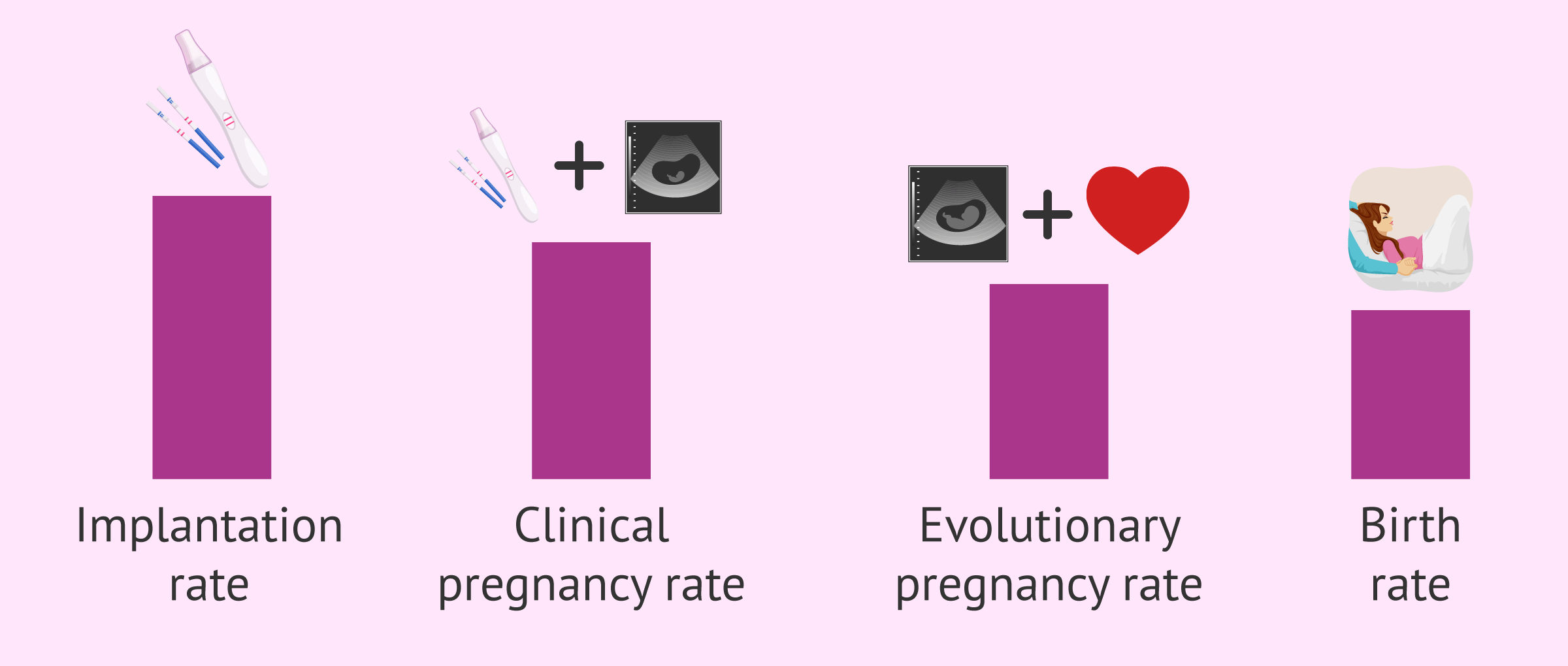
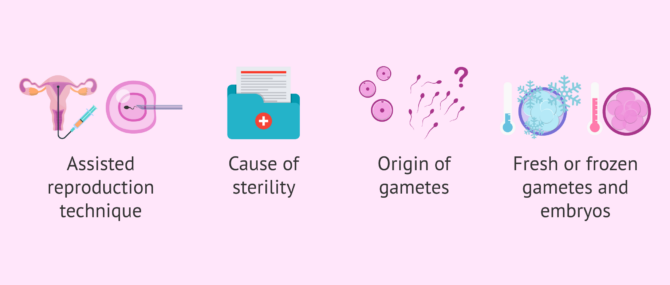
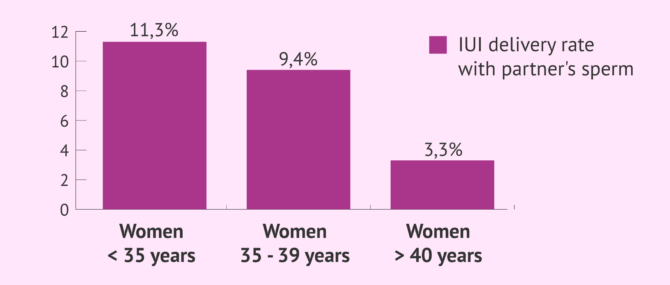
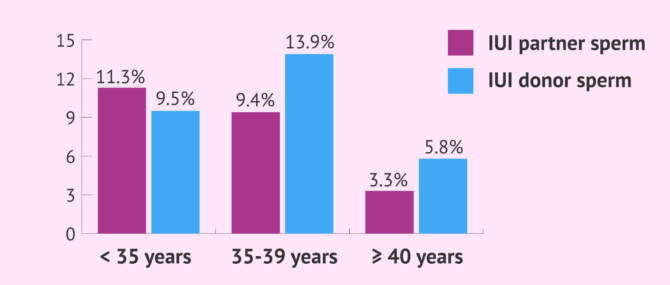
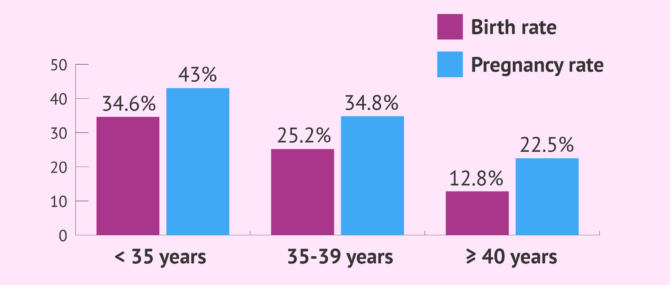
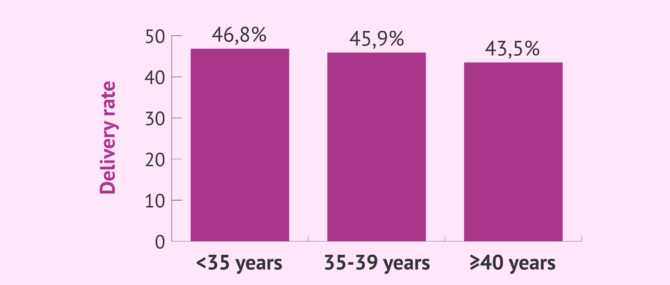
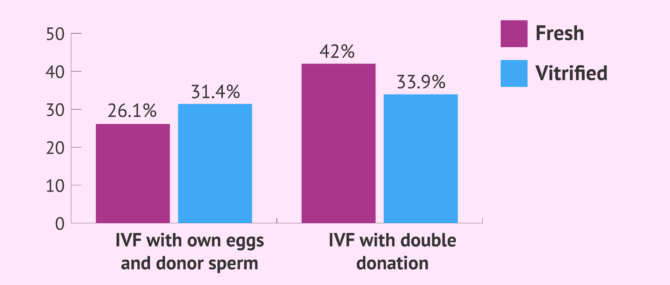
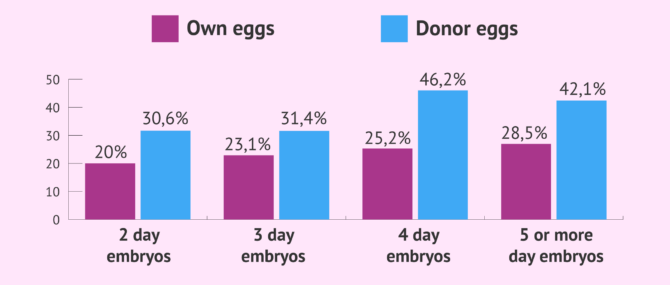


Hi, thanks for all the info, it is interesting to see what the chances are of getting pregnant with the different options. I understand that this data has been collected for Spain. I live in Scotland and I wonder if I can assume the probabilities are the same. Thanks in advance.
Hi Amy_Sinc,
Yes, the data we have used in this analysis comes from the latest figures from the Spanish Fertility Society (SEF) and are for 2020.
Although the laws on assisted reproduction techniques may vary from country to country, the techniques themselves remain the same. Furthermore, Spain is one of the countries at the forefront of assisted reproduction so yes, you can take this data as a general guide for looking at the probabilities of getting pregnant with the various treatments.
I hope this is useful for you.
Best wishes
What is the probability of success in the first IVF? I am 37 years old and have infertility of unknown cause. My partner and I have been trying for 2 years without success 🙁
Hi Fatma,
Among women over 35 years, the birth rate in the first IVF cycle is between 8-23%.
Hope this helps you,
Best